As fascinating as microscopic images are, their true worth lies in the information they give. Image segmentation is one of the most difficult problems in microscopy today, and it serves as the foundation for all future image analysis procedures.
Even non-experts can quickly develop solid and repeatable segmentation results with ZEN Intellesis’ Python-based machine-learning algorithms, including pixel categorization and deep learning. Users may now train the software once, and ZEN Intellesis will automatically segment a batch of hundreds of photos. Users can save time while reducing user bias.
Highlights
Use Deep Learning to Segment Your Images
Users often need to segment distinct types of items in several photos to acquire trustworthy data from them. With ZEN Intellesis, users can now train the software on a few photos using your knowledge. The software module ZEN Intellesis’s advanced machine-learning algorithms (including Deep Learning) will then perform all of the time-consuming segmentation procedures on the hundreds of comparable photos.
Even complex multidimensional, multi-modal data may be studied with the Python-powered tools, which include pixel classification with real multichannel feature extraction and segmentation using pre-trained networks. Users may also import and take their personal deep learning models with the software.
Enjoy Smooth Workflow Integration
Machine learning is made simple using the software module ZEN Intellesis: Simply install the image, create the classes, label pixels, train the model, and segment the image. Users may even integrate a pre-trained model for routine services like Nucleus Segmentation, which can be used to segment and analyze complete datasets.
Additionally, users can train their own network and import it into ZEN. A commercial service for creating customized pre-trained networks is also available. Intellesis is scriptable and is completely integrated into the Image Analysis Framework in ZEN Blue and ZEN core Imaging Software. This system guarantees that all of the important Metadata remains connected and accessible for subsequent processing processes.
Analyze Multi-Modal Images from Many Sources, in Many Formats
With the ZEN Intellesis software module, users can effortlessly segment multidimensional images from a wide range of imaging sources, including:
- Widefield Microscopy
- Superresolution Microscopy
- Fluorescence Microscopy
- Label-Free Microscopy
- Confocal Microscopy
- Light Sheet Microscopy
- Electron Microscopy
- X-Ray Microscopy
With ZEN Connect, users may combine images from several microscopes on the same material and use the findings with ZEN Intellesis to obtain information that is even more useful. To segregate the structures of interest, the software will employ image features from all modalities at the same time. ZEN Intellesis can segment all Bio-Formats supported images by simply importing OME-TIFF or TXM images or by using the third-party import function.
Application Example Life Sciences
Scratch Assay
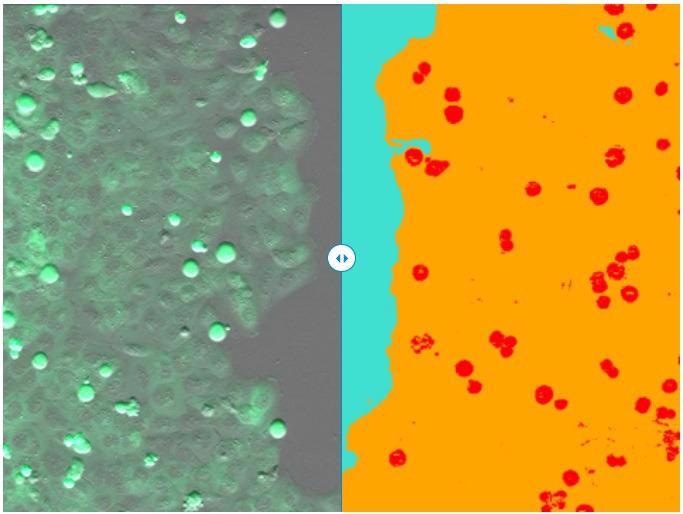
(left) Single frame of recorded time-lapse movie. (right) Segmentation result of ZEN Intellesis - scratch area (turquoise), cell layer (orange), and mitotic cells (red). Image Credit: Carl Zeiss Microscopy GmbH
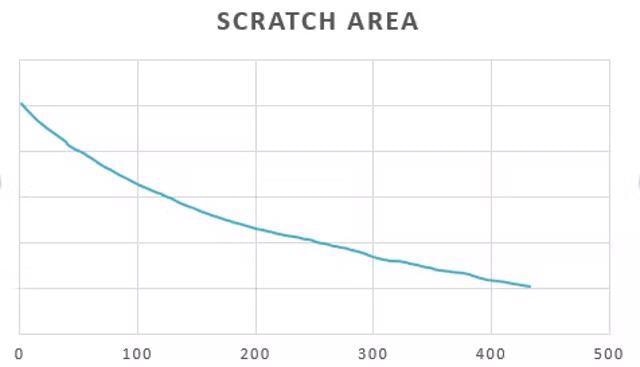
Based on ZEN Intellesis segmentation results, the size of the scratch area was measured over time using the ZEN Image Analysis module. Image Credit: Carl Zeiss Microscopy GmbH
Spines and Dendrites
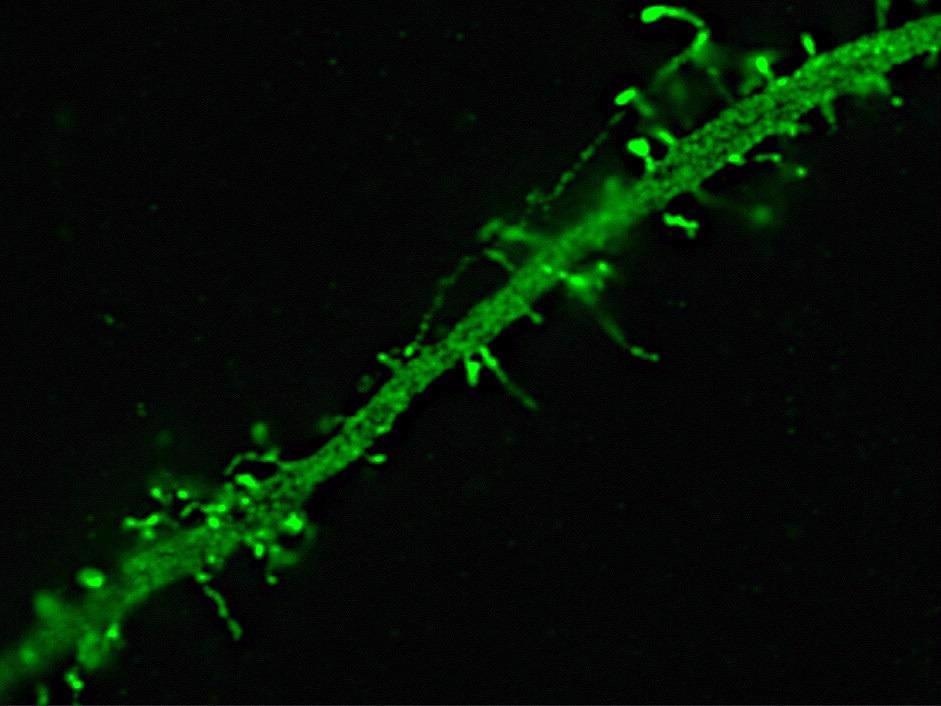
Dendrite of a neuron expressing Green Fluorescent Protein. Image acquired with structured illumination on an Elyra PS.1 showing spines on a dendrite. Image Credit: Carl Zeiss Microscopy GmbH
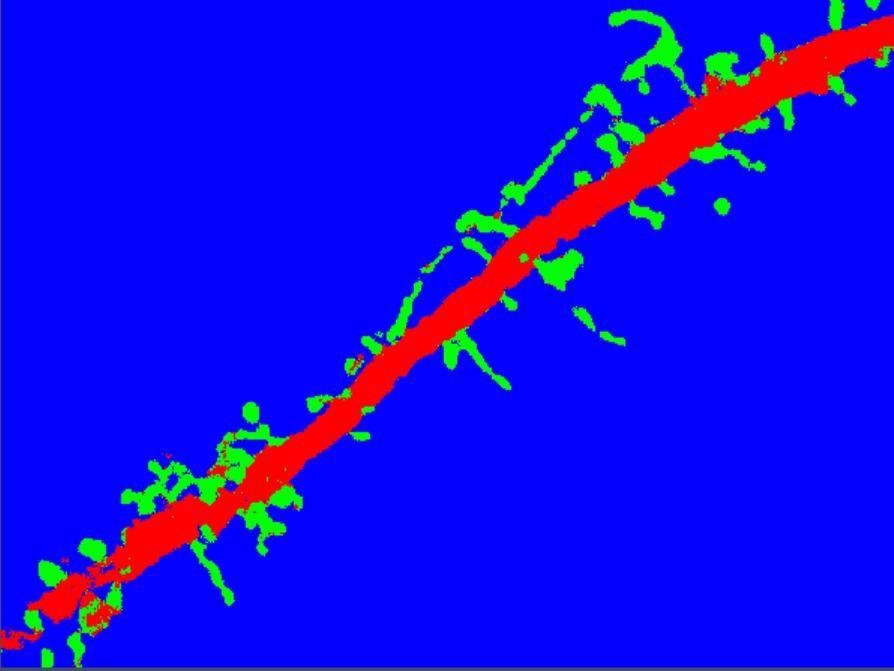
Segmentation with ZEN Intellesis results in a clear separation of spines (green) from dendrite (red) and background (blue). Image Credit: Carl Zeiss Microscopy GmbH
Drosophila
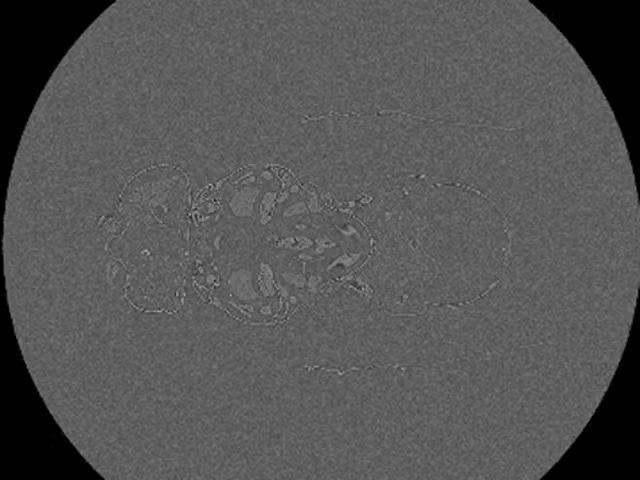
X-Ray micrograph of a Drosophila melanogaster. 1400 slide z-stack of the whole fruit fly acquired with ZEISS 520 Versa. Image Credit: Carl Zeiss Microscopy GmbH
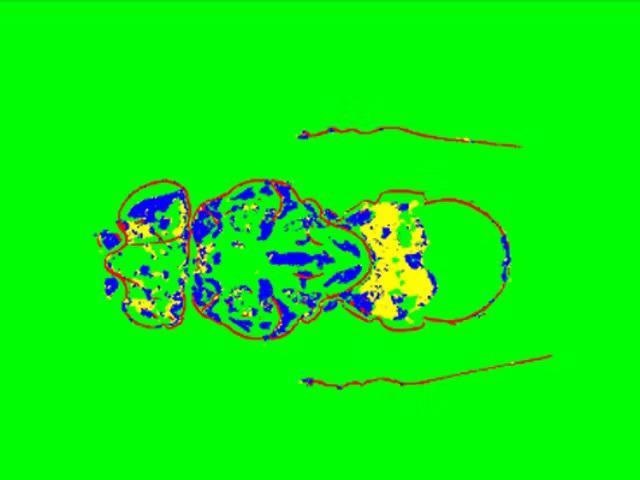
Segmentation result obtained with ZEN Intellesis – exoskeleton (red), inner structures (blue and yellow), background (green). Image Credit: Carl Zeiss Microscopy GmbH

Rendered 3D model based on exoskeleton class. Image Credit: Carl Zeiss Microscopy GmbH
Application Example Materials Analysis
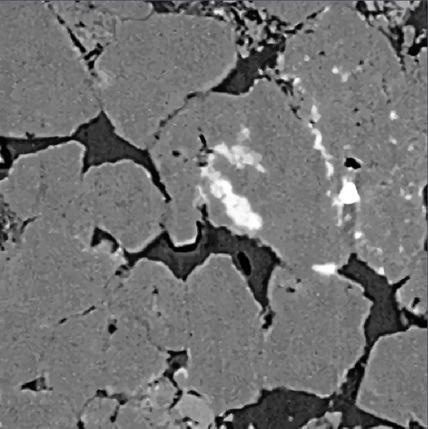
XRM Sandstone – Original. Image Credit: Carl Zeiss Microscopy GmbH
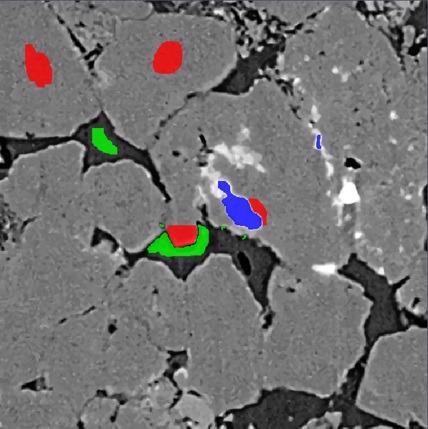
XRM Sandstone – Labeled. Image Credit: Carl Zeiss Microscopy GmbH
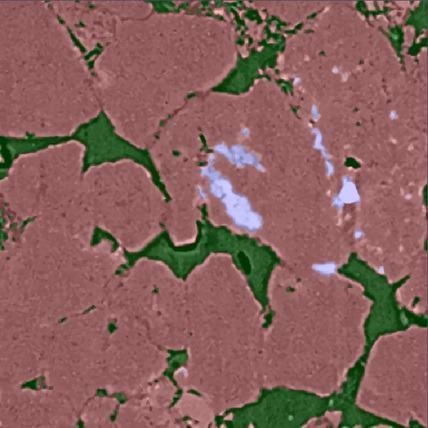
XRM Sandstone – Trained & Segmented. Image Credit: Carl Zeiss Microscopy GmbH
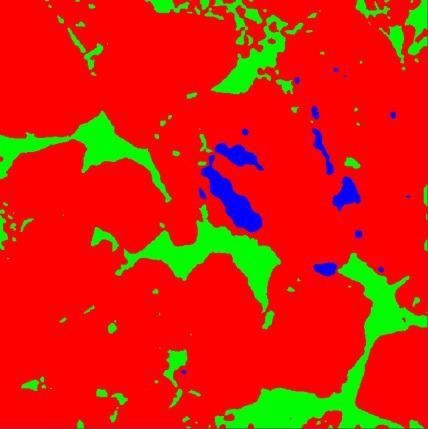
XRM Sandstone – IP Function Output. Image Credit: Carl Zeiss Microscopy GmbH